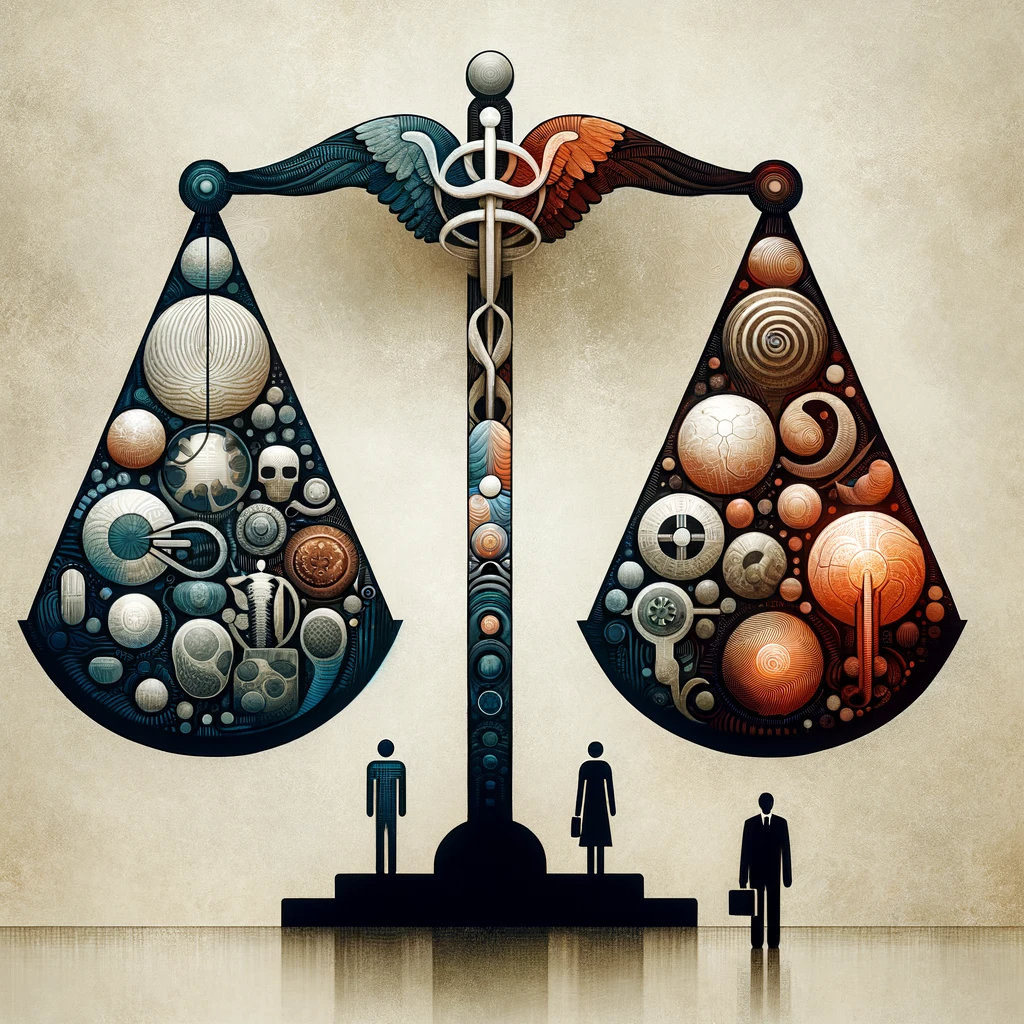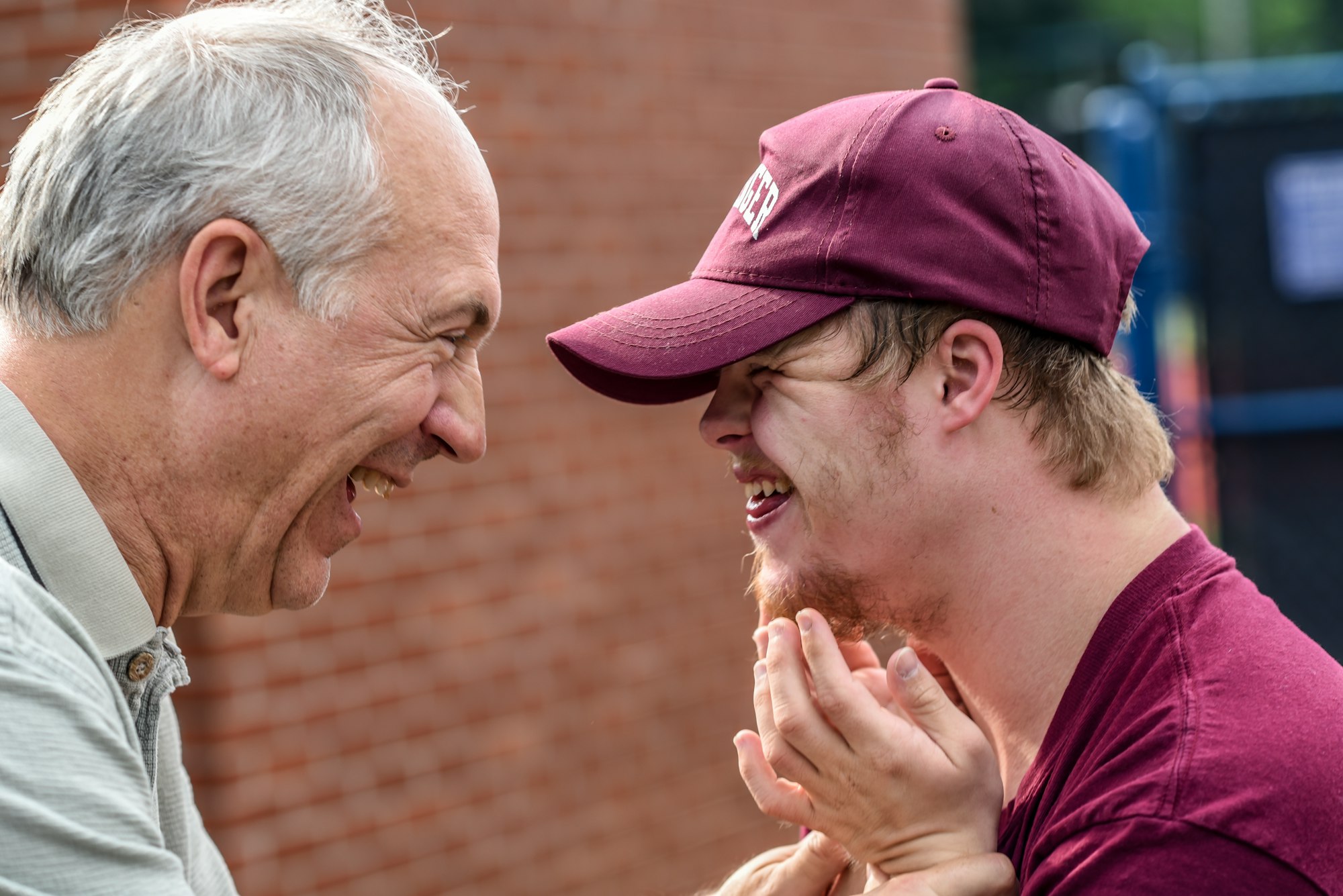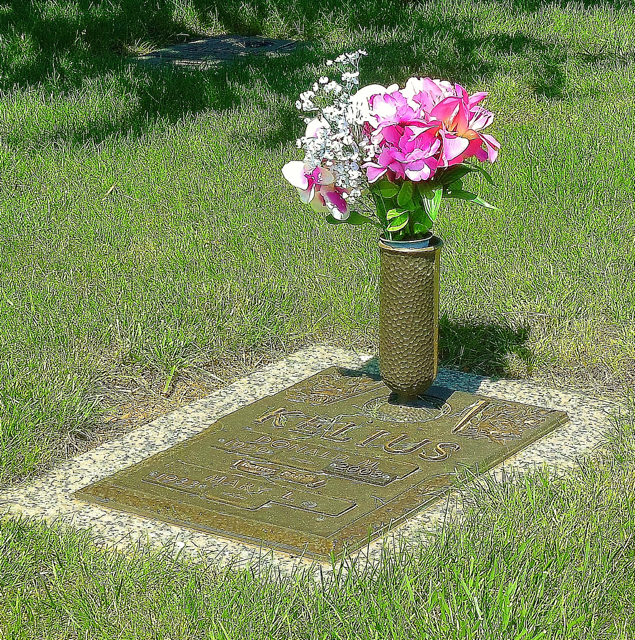Understanding Assisted Suicide: Definitions, Debates, and Developments
Explore the intricate facets of assisted suicide, including its definitions, ethical debates, and legal developments. Understand the balance between patient autonomy and societal ethics in the evolving discourse on end-of-life choices.

With the growing aging population and not enough youth to provide care during this silver tsunami, there is growing interest in rational suicide as part of end of life planning. Many seniors and family caregivers are experiencing the lack of community services to support them.
Seniors with chronic pain are seen as drug seeking and denied pain medications due to the present political climate. Seniors are asked to sign contracts and are subjected to drug testing to be able to receive much needed medications. Drug testing for non addictive sleeping pills is not being required.
To add insult to injury, while the government is severely limiting access to pain medications, the access to pain management services are also being rationed. Interventional pain management provides help those living with chronic pain. The purpose of these procedures is to decrease or totally eliminate taking pain medications. The government policy maker are not limiting these procedures. Managing pain is now more challenging than ever before. I know, because I live with chronic pain. My stomach makes it challenging to take pain medications.
I advocated for my son to get the best possible care for his pain condition, CRPS. My son, like many with this debilitating condition are treated badly and accused of being drug seeking. My chronic pain is from years of ortho/ rehab nursing. I tell people that I used to pick up men for a living. ( I am being silly. We must keep our sense of humor, to get through all this negativity). I was receiving interventional pain management for my cervical, thoracic and lower back pain. My lower back, especially my left side, had radiofrequency ablation treatments several times a year. These procedures allowed me a better quality of life.
Our government policy makers have decided to limit interventional pain management treatments, impacting my quality of life. You can imagine my anger when my pain management doctor tells me, no worries, we can start you on pain medications.

I am very familiar with the dance of pain management. The patient expresses pain, Pain pills are prescribed. Your body develops a tolerance to the pain medications. You ask for more to help to relieve the pain. Then, you are accused of drug seeking. Then, you are referred to interventional pain management to help you manage your pain and decrease of eliminate the use of medications. Under Medicare, interventional pain management treatments are limited to one time a year. To make matters worse, under my plan, the pain patches that were ordered were going to cost me $700 a month. That was for 4 pain patches.
The rationing of Medicare coverage for vital services is further contributing to this movement. Under the Medicare Advantage programs, this insurance platform uses cost sharing as a way to deter use of benefits. The high copays for needed services for therapies and even skilled care is causing many to discuss the option of assisted suicide, or rational suicide. When a family learns that a family member needs skilled care to recover from a stroke or hip surgery is leaving many in shock. You see, the copays for skilled care under the Medicare Advantage plans with some plans requires the consumer to pay $250 a day, as their part of the cost sharing approach to care. This is leading to family caregivers distraught and left with limited options. Most seniors do not want to be a burden to their family.
I belong to a group, Exit International. I also have purchased the Peaceful Pill book. This book and organization support and advocate for assisted suicide throughout the world. I am on several different social media platforms to support those in pain and ongoing suffering. What I am witnessing in some countries, especially Canada has me very concerned. I decided to share my thoughts on this difficult and concerning issue.

Assisted Suicide Defined
Let, me start with explaining the concept of assisted suicide. This is often termed as 'assisted death' or 'assisted euthanasia', involves a terminally ill person choosing to end their life with the aid of a healthcare professional. This decision is typically made to escape intractable pain or a severely diminished quality of life. The assisted suicide definition encapsulates the notion that such a decision is made rationally and not on the basis of emotional or psychological distress.
Rational Suicide: A Controversial Concept
Rational suicide, a term often associated with assisted death, raises the question: Can choosing to end one's life in certain circumstances be considered rational? This notion suggests that for individuals facing terminal illness, ending their life may be a reasoned choice rather than one driven by mental health issues.
The debate is brewing. Is rational suicide really rational? What does rational suicide mean?
The definition in simple terms : “the concept that suicide is presumably a reasonable choice by a terminally ill person. The ending of one’s life for considered reasons as opposed to emotional/psychological reasons.”
I want to elaborate on the topic of rational suicide, particularly in light of recommendations or perspectives from the Journal of the American Medical Association (JAMA), involves exploring the ethical, medical, and social dimensions of this concept.

Rational Suicide: A Deeper Dive
Defining Rational Suicide
Rational suicide is the idea that a person can make a reasoned and coherent decision to end their life in the face of unbearable suffering, typically due to a terminal illness. This concept challenges traditional views of suicide by suggesting that such a decision can be free of mental illness and made after careful consideration.
JAMA's Perspective and Ethical Considerations
While specific recent recommendations from JAMA on rational suicide might not be available, the medical and ethical discussions in such journals generally revolve around:
Patient Autonomy: Respecting a patient's right to make informed decisions about their own life, including the right to refuse life-sustaining treatments.
Mental Competency: Assessing whether a patient is mentally competent to make such a grave decision is crucial. This involves evaluating their ability to understand the nature and consequences of their choice.
Palliative Care Alternatives: Journals like JAMA often emphasize the importance of exploring all palliative care options to manage pain and improve quality of life before considering assisted suicide.
Ethical Dilemmas for Healthcare Providers: The role of physicians in assisting suicide is ethically complex. They must balance their duty to preserve life with respecting patient autonomy and alleviating suffering.
I have a son, a disabled US army veteran that completed suicide because of a debilitating and unrelenting pain condition. The treatment he received in the military medical delivery system was nothing short of substandard and abusive. Once he was discharged and in the VA system, the care never improved. I can say, what occurs in the military medical delivery system would never be tolerate in a public for profit hospital system.
It is the reason we have lost 22 vets a day to suicide since the Vietnam war. Sadly, our government run health care system of Medicare, Medicaid and ACA programs are turning into the VA system. Strangulating government regulations are having a negative impact on our health care system. I'll share more throughout this article.

The Role of Rational Suicide in Terminal Illness
In cases of terminal illness, where the prognosis is poor and suffering is significant, rational suicide is argued by some as a logical choice to escape pain and loss of dignity. The argument is that in these circumstances, choosing death can be a rational, autonomous decision, not impeded by psychological disorders.
Societal and Legal Implications
Rational suicide also raises broader societal and legal questions:
- Societal Attitudes: How society views death, dying, and the value of life influences the acceptance of rational suicide.
- Legal Framework: The legality of assisted suicide varies widely across jurisdictions, with some places allowing it under strict conditions, while others prohibit it outright.
Recommendations for Healthcare Providers
In dealing with cases that might be considered rational suicide, healthcare providers are often advised to:
- Conduct thorough mental health evaluations to rule out treatable conditions like depression.
- Engage in open, compassionate conversations with patients and their families about end-of-life options.
- Ensure all palliative care options have been explored and offered.
- Respect patient autonomy while being aware of their own ethical boundaries.
As I have made you aware, I have a son that completed suicide. He developed PTSD dealing with the military medical delivery system.
Future Directions
The debate over rational suicide continues to evolve, with ongoing discussions in the medical community about how best to balance ethical concerns with patient rights. Advances in palliative care, changing legal landscapes, and societal shifts in attitudes towards death and dying are all influencing this debate.
Of course there is nothing “simple” about this subject. With the growing aging population, we are facing living longer, but, not healthier. With advanced technologies and medical advancements.. we now have the ability to extend our life span.
The ‘right to die’ movement is growing, as boomers begin to age. Many are expressing they want to have the right to choose the time and manner of their death.
Many boomers are experiencing:
- Watching friends and families live with dementia
- Chronic and painful medical conditions
- And progressive illnesses.
Many want to ability to make a “rational” assessment of their end of life planning. They want to assure freedom from pain or a debilitating disease. Of the utmost importance to all is for their quality of life.
I want to share a very personal experience I had after the death of my oldest son.As I have expressed earlier, I live with chronic pain. Being the survivor of a son that completed suicide, you live with a stigma. I have need blamed by family members that I didn't do enough to save my son. What people don't know is, if my son had expressed to me that was his wish, I would have reached out to Dignitas in Switzerland and taken him there.

Assisted Suicide, Rational Suicide and Dignitas
I had learned about Dignitas after reading the story of Gill Pharoah. The death of Gill Pharoah at a Swiss Euthanasia clinic has fueled this debate of rational or assisted suicide. She was a healthy 75-year-old palliative care nurse from London. She has worked with the elderly most of her nursing career.
Pharoah wrote to the Times, boldly claiming that “many old people are a burden on society”. While she was healthy, she did not want to become a “burden” on her family or society. While I think that cases such as Ms Pharoah are rare, the word “burden”, I believe sits in the minds of many aging seniors. This may be the reason that our second highest suicide population in the US , is those 85 years of age and older.
So I explored the Dignitas option. I started the process. One of the steps it to find a psychiatrist that will evaluate me for mental soundness on making end of life issues. That is not an easy task here in the US. I must have called over 100 psychiatrists in the Philadelphia area. Not one would entertain the thought because they fear being sued by remaining family members. I am a very resourceful person. I did care management for decades and know for every problem, there is a solution.
I have worked with attorneys in the past on a few cases. So, I reached out to one and explained what I was doing. He suggested to me, that I reach out to forensic psychologists or forensic psychiatrists. They are used to evaluating individuals for court cases. I reached out to a forensic psychologist. The first one I spoke to was willing to test me for mental soundness to make a rational decision based on end of life issues. It was a very intense 2 days of testing. It was also very expensive. I was deemed to be able to make a rational decision on my end of life issues. I have that test done 13 years ago. I keep it in a safe place and have an exit plan in place. I feel like the nurse Gill Pharoah. I never want to be a burden to anyone.

The Growing Right to Die Movement
As medical advancements extend lifespans, they also bring into focus the quality of extended life. This has given impetus to the 'right to die' movement, particularly among aging populations like the baby boomers. These individuals witness firsthand the struggles with dementia, chronic conditions, and progressive illnesses in their circles. They argue for the right to make end-of-life decisions, emphasizing the importance of maintaining quality of life over mere prolongation.
Case Studies Fueling the Debate
Discussing high-profile cases that have significantly influenced the debate and advocacy for euthanasia provides insight into the complex ethical, legal, and personal dimensions of this issue. One of the most notable cases is that of Brittany Maynard, but there have been others around the world that have also played a crucial role in shaping the conversation and laws regarding euthanasia and assisted suicide.
Gill Pharoah UK
High-profile cases, like that of Gill Pharoah, a healthy 75-year-old palliative care nurse who opted for assisted death in Switzerland, intensify this debate. Her decision, driven by the desire not to become a burden, brings to light the complex interplay of personal, societal, and ethical considerations in assisted suicide choices.
Brittany Maynard (USA)
Brittany Maynard became a public figure in the debate over euthanasia in the United States. At 29 years old, Brittany was diagnosed with a terminal brain tumor and given six months to live. After learning about her limited and painful options for the end of her life, she decided to move to Oregon, one of the few states in the U.S. where Death with Dignity laws allowed her to legally end her life on her own terms. Her story received international attention, igniting conversations about the right to die with dignity. Maynard chose to end her life in November 2014, but not before becoming a vocal advocate for assisted dying laws, significantly impacting the national dialogue and legislative efforts in various states.
Terry Schiavo (USA)
Although not a case of euthanasia in the traditional sense, Terry Schiavo’s situation highlights issues related to end-of-life decisions and the right to die. Schiavo was in a persistent vegetative state for 15 years following a cardiac arrest that caused massive brain damage. A legal battle ensued between her husband, who argued that she would not have wanted to live in such a condition, and her parents, who contended that she should be kept alive. The case, which involved numerous court rulings, Congressional intervention, and media coverage, brought to the public's attention the importance of living wills and advanced healthcare directives.
Dr. Jack Kevorkian (USA)
Dr. Jack Kevorkian, often referred to as “Dr. Death,” was a pathologist and a controversial figure in the right-to-die movement in the United States. He assisted in the deaths of over 100 terminally ill people. His methods and advocacy for assisted suicide led to public debates on the ethics of euthanasia and ultimately to his conviction for second-degree murder. Despite the controversy, his actions significantly influenced the national conversation on assisted dying and patient autonomy.
Sue Rodriguez (Canada)
Sue Rodriguez was a Canadian woman who became a prominent figure in the debate over assisted suicide in Canada. After being diagnosed with amyotrophic lateral sclerosis (ALS), she challenged the Canadian laws prohibiting assisted suicide. Her case reached the Supreme Court of Canada in 1993. Although the court ruled against her, the case sparked national debate and led to incremental changes in Canadian law, culminating in the legalization of medical assistance in dying in 2016.
Vincent Humbert (France)
Vincent Humbert, a Frenchman who became tetraplegic, blind, and mute following a car accident, became a symbol in France's debate over euthanasia. He wrote a book using eye movements, calling for the right to die. After his mother administered a lethal dose of sedatives, both she and the doctor who disconnected his life support were initially charged, though the charges were later dropped. This case significantly influenced French end-of-life legislation.
These cases, among others, have been pivotal in shaping public opinion, law, and ethical discussions surrounding euthanasia and assisted suicide worldwide. Each story brings unique perspectives to the complex questions about the right to die, patient autonomy, and the role of medical professionals in end-of-life care.

Assisted Suicide in Canada: A Case Study
Canada's approach to assisted suicide has been evolving, especially with laws expanding to include not just terminally ill patients but also those with chronic, painful conditions. This expansion, while broadly accepted, has reignited debates over the implications of such policies, especially concerning the disabled community. It is what is occuring in Canada that prompted me to write this article. As a supporter for rational assisted suicide, what I learned what was happening in Canada caused me pause to rethink my stance on this subject. You see, Canada has taken it to the extreme. What I learned, turned my stomach. This is a commercial the Canadian government created that shocked the world.
Here is the video that shocked the world
The Canadian System: Legal and Ethical Considerations
Under Canadian law, individuals seeking assisted death undergo thorough assessments, with different protocols for those terminally ill and those with non-life-threatening conditions. This system aims to balance individual rights with necessary safeguards, though it continues to be a topic of intense debate, especially with upcoming expansions to include certain mental disorders.
It was this interview and many like it that caused me to realize that this is the pendulum moving the needle to the extreme.
Former paralympian tells MPs veterans department offered her assisted death
Global Perspectives on Assisted Suicide
Assisted suicide laws vary globally, with countries like Belgium, the Netherlands, and several American states having their own sets of regulations and ethical guidelines. The Canadian model, often compared with these, highlights the diversity in approaches to this sensitive issue.
The U.S. Context: Laws and Debates
In the United States, assisted suicide laws vary by state. States like Oregon, Washington, and California have Death with Dignity Acts, allowing terminally ill adults to request prescription medication to end their life. These laws come with their own sets of stringent criteria and safeguards to prevent abuse and ensure that the decision is voluntary and well-considered.

Ethical and Societal Implications
The debate around assisted suicide encompasses a range of ethical, moral, and societal considerations. Questions arise about the value of life, the rights of individuals to choose their death, and the societal responsibility to protect its vulnerable members. This discourse also touches on the role of healthcare providers in end-of-life care and their ethical obligations.
Looking Forward: The Future of Assisted Suicide
As populations age and medical technologies advance, the conversation around assisted suicide will likely continue to evolve. Balancing individual autonomy with ethical considerations and societal values remains a complex and ongoing challenge.
The ethical dilemma surrounding assisted suicide, especially when it is considered as a potential solution for the poor and disabled, raises profound questions about societal values, the sanctity of life, and the potential for abuse in the healthcare system. The concern that assisted suicide could be misused as a cost-saving measure for governments or as an expedient solution to the challenges of an aging population is a significant and contentious issue.
The Intersection of Assisted Suicide, Poverty, and Disability
Financial Considerations and Healthcare: One of the central ethical concerns is that individuals in poverty or with disabilities might see assisted suicide as their only viable option due to financial constraints. This situation could arise in systems where healthcare costs are high, and support for chronic or terminal illnesses is insufficient. The fear is that assisted suicide could be seen less as an autonomous choice and more as a necessity driven by economic circumstances. This is the option Canada is offering to those that are waiting for medical treatments and services covered under universal health care.
Perception of Life Value: Offering assisted suicide as an option primarily to those who are financially burdened or disabled can imply a societal view that these lives are less valuable. This perception is deeply troubling and fundamentally at odds with principles of equality and human dignity. See how poverty, not pain is driving the disabled, the poor and the mentally ill in Canada to look to assisted suicide
Potential for Coercion: There's a risk that economically disadvantaged individuals might be subtly coerced into choosing assisted suicide. This coercion might not be overt but could stem from an awareness of the financial and emotional burden their care places on families and the state. There are many in Canada that feel they are being offered assisted suicide as an option when they have not expressed an interest in it.

Assisted Suicide as a Response to Aging Populations
Aging and Care Challenges: With the global increase in life expectancy and the growing proportion of elderly individuals, societies face significant challenges in providing adequate care. This situation raises questions about how to manage the increasing demands for healthcare, support services, and palliative care. Low birth rates have significant and multifaceted implications for the future economy, affecting everything from workforce dynamics to social security systems and overall economic growth. These impacts are increasingly evident in many parts of the world, particularly in developed countries where declining fertility rates have become a pressing concern.
Let's explore the key ways in which low birth rates are shaping the economic landscape.
Aging Workforce
Decreased Labor Supply: A lower birth rate leads to a smaller younger population, which eventually translates into a reduced labor force. This can result in labor shortages, particularly in sectors that rely heavily on younger workers.
Increased Dependency Ratio: With fewer young people entering the workforce and more older individuals retiring, the dependency ratio (the number of non-working individuals supported by working individuals) increases. This puts additional pressure on the working population to support the non-working elderly.
Economic Growth
Reduced Consumer Base: A smaller population often means a smaller domestic consumer base, which can limit internal market growth. This can lead to reduced business investments and a potential slowdown in economic growth.
Innovation and Productivity: The dynamism brought about by younger generations in terms of innovation and entrepreneurship might diminish, potentially impacting the overall productivity and economic competitiveness of a country.
Social Security and Healthcare Systems
Strain on Pension Systems: With an aging population and fewer young workers, pension systems face financial strain. There are fewer contributors to the system, while the demand for pension payouts increases.
Healthcare Challenges: An older population typically requires more healthcare services, putting additional pressure on healthcare systems. The cost of healthcare may increase, and there might be a need for more healthcare workers and facilities. All of these issues make the Canadian approach to assisted suicide, for financial reasons, attractive option to the government.
Ethical Implications: Suggesting assisted suicide as a solution to the challenges posed by an aging population can be seen as a slippery slope towards valuing lives based on their perceived societal utility rather than inherent dignity. It raises ethical concerns about how societies care for their most vulnerable members.
Alternative Solutions: Rather than viewing assisted suicide as a potential solution to these demographic shifts, the focus should be on improving healthcare systems, increasing support for elderly and disabled individuals, and enhancing palliative care options. Societies should strive to create systems where all individuals feel valued and supported, regardless of their age, health status, or financial situation.

Balancing Autonomy and Protection
Safeguards in Legislation: To address these concerns, any legislation surrounding assisted suicide must include stringent safeguards. These measures should ensure that the decision to pursue assisted suicide is truly voluntary, informed, and not influenced by external pressures, whether financial or social.
Broadening Support Systems: It’s crucial to expand and strengthen support systems for the elderly, disabled, and economically disadvantaged. This approach includes enhancing access to quality healthcare, providing financial support, and ensuring robust social services. While this sounds good in theory, it does not address the reality of the situation. Because of low birth rates, we are already functioning in a humanitarian crisis.
Continuous Ethical Discourse: Ongoing ethical discussions and reviews of assisted suicide policies are essential to ensure they align with societal values and do not disproportionately impact vulnerable populations.
In conclusion, while assisted suicide for terminally ill individuals can be seen as an aspect of respecting personal autonomy and dignity, its potential application as a solution for financial and demographic challenges is fraught with ethical complications. It's imperative that societies address these concerns through comprehensive healthcare policies, robust support systems, and continued ethical vigilance to protect the most vulnerable.
While I am an advocate for those that seek assisted suicide, I believe as a culture, we are starting a slippery slope on rational assisted suicide that may result in death of poor, disabled and elderly because they are a financial drain to society.
You might also like this article:

